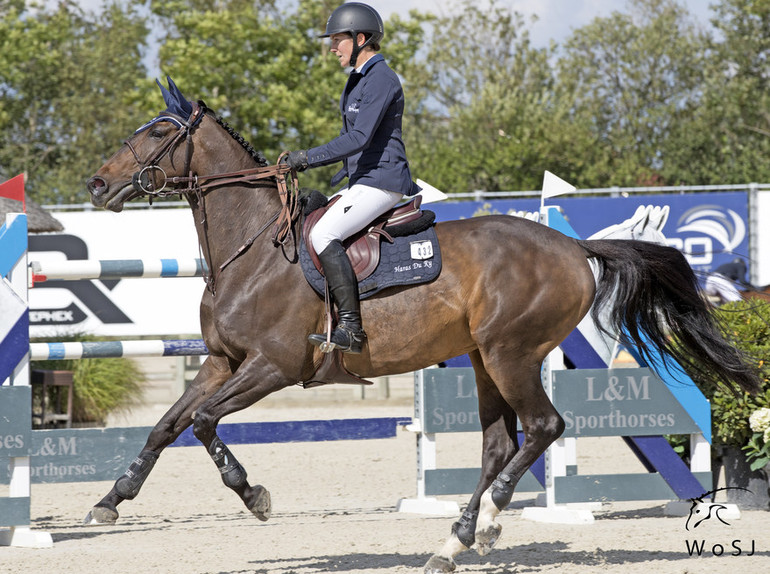Text © World of Showjumping
With six of her eight horses returning positive EHV-1 tests after coming back home from the Sunshine Tour in Vejer de la Frontera, Spain, Australian rider Amy Graham has left a nerve-wracking week behind her. After the tests came back positive on the 10th of March, one horse started showing some of the symptoms of EHV-1 and was transferred to a veterinary clinic. WoSJ called up Graham, who could finally share some better news.
“We get good news every day,” Graham says. “We have one horse in the clinic that is improving, and she might be able to come back home Tuesday this week. With the time frame for this virus, I think we are coming to the end of this. We will definitely wait for negative tests though before we let the horses out of the quarantine stables here at Haras du Ry.”
At the Sunshine Tour, Graham’s horses were stabled in the same tent as a horse that on the 26th of February was moved into isolation due to fever, later on developed neurological signs and that upon its return to Belgium tested positive for EHV-1. “My horses were not close to this horse though, it was at least one or two aisles in between and I was not aware at the time. A horse can get fever for so many different reasons and while the horse was still in Vejer, it tested negative for EHV-1. I think the organisers did the best they could in the situation as they moved the horse straight to the isolation stable when it came down with fever,” Graham – who left home with her horses on the 2nd of March – says.
“This is not a new virus and there are cases every year,” Graham says. “However, we have been extremely unlucky that the virus entered into an environment with so many horses."
I think we know now that the virus also left Valencia way before the FEI shut the show down there. Horses arrived at the Sunshine Tour from Valencia all the time, and it was only after the 26th of February that they were moved to the quarantine stables away from the show ground – but by then it was too late.
"This is not anyone’s fault; it is just how it is. We can only be as proactive as we can,” Graham says.
Graham’s horses returned to their home at Haras du Ry on the 3rd of March and went straight into isolation. “It is extremely fortunate that they went into quarantine. I never thought that any of the horses would have contracted EHV and none of them had symptoms. However, the night before we got our positive results, I found out that I had been much closer to the horse that went into isolation on the 26th of February than I first thought – that we were in the same tent.”
Graham notified the FFE, FEI, Equestrian Australia, the organisers at Sunshine Tour, owners, clients and the riders that had horses close to her at Sunshine Tour. “I emailed them in the morning of the positive results and the organisers called me back at the end of the day to confirm,” Graham tells.
Graham is positive that the spread of the virus can be slowed if everyone follows the protocols. “The testing is not perfect, that is for sure,” Graham says. “There can be false negatives or false positives. Even if you get a negative result, you should still follow protocol and not mix the horses – otherwise you are taking a risk. Your horse might be infected, and you risk spreading the virus. What we have learned from Valencia is that this virus is very powerful. And as I understand it is easier to treat horses where less horses are infected, compared to when many infected horses are in the same place. The more horses infected in one area, the more difficult it is for the horses to fight against it.”
“It is easy for me to say ‘put the horses in quarantine’, as we have a separate barn here at Haras du Ry. However, it is really important to do this. There are no shows now and we can focus on the horses’ well-being. We can take the time to make sure we get reduce the spread of the virus and on the 11th of April we are hopefully ready to go again,” Graham says.
“Compared to Covid-19, we can knock this virus on the head if we all follow the protocols. We can stop this fast if we all come together,” Graham says. “And hopefully, with so many horses that have gotten infected, the vets and scientists will be able to analyse this strain of the virus and how it reacts so that we can use that information to avoid this from happening again in the future.”
No reproduction without written permission, copyright © World of Showjumping









